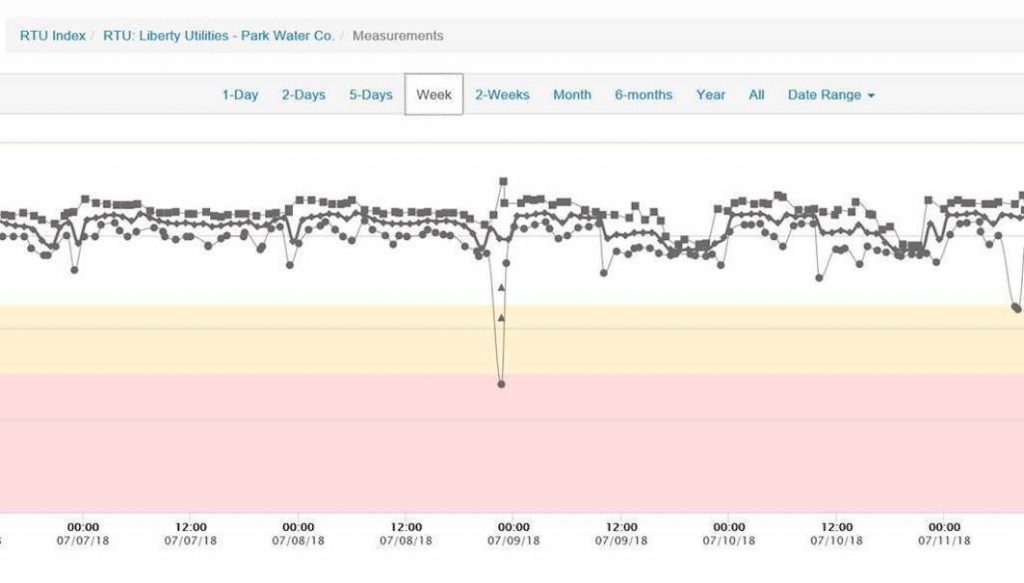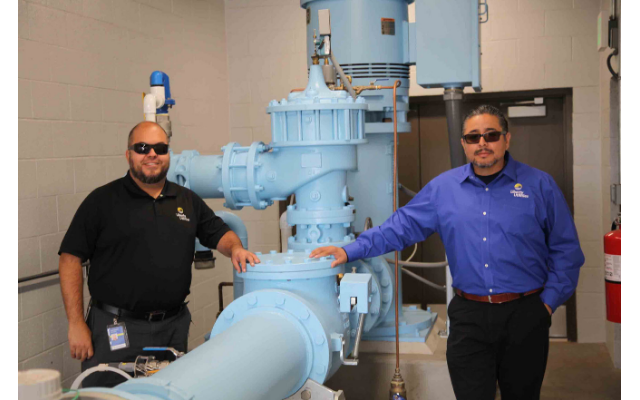Liberty Utilities delivers safe reliable drinking water to over 27,000 residents in southeast Los Angeles County and 20,000 residents around Apple Valley, California. Liberty Utilities is a regulated and – private utility with over 260 miles of water main, servicing eight cities in the region.
Liberty Utilities is working to reduce dependency on purchased water, which is more costly for residents. Recent regulations and legislative developments makes importing water unreliable and increasingly expensive. Whereas, groundwater is controlled locally, thereby limiting the amount of involvement by outside agencies, thus making groundwater a preferred source. The efforts to reduce dependency on purchased water and increase ground water have required new wells to be brought online to increase the amount of the local water supply.
With the installation of these new wells, Liberty Utilities’ operators detected some pressure drops when switching from an established well to a larger well. Pressure drops can cause inconveniences for customers and can compromise water quality if left to persist over time.
Liberty Utilities being a responsible provider of quality and reliable water services combined with a focus on premiere customer service, began looking for immediate solutions to the fluctuations in water pressure.
Gabriel Gomez, Operations Supervisor for Liberty Utilities, California, was researching a remote pressure monitoring system that would not only reduce field personnel time but provide real-time data that would give the utility immediate information on these fluctuations.
Gomez reached out to Mueller Water Products to see if he could trial the Hydro-Guard™ Remote Pressure Monitoring (RPM) System. This system is capable of monitoring standard state pressure at a rate of one reading every 15 seconds or measuring pressure at a rate of 256 readings per second. It can be deployed using a service saddle with a direct tap into the distribution main or installed in a meter vault. The system is powered by a lithium battery and transmits data via cellular communication back to a cloud-based server, accessible to any smart phone, desktop or SCADA system.
The unit was installed by tapping into an unused water service connection next to a meter box. Once the pressure sensor had been securely coupled to the angle meter valve and the sensor cable to the RTU, the device automatically registered and began operating, with no further mechanical work required. “The entire setup took less than an hour and was easily activated with our Mueller Rep on site, giving us instantaneous near-live data,” said Gomez.
 The Hydro-Guard pressure monitoring system showed that the switch between one well to another was not set fast enough. By changing the control speed of the variable frequency drive pump through the PLC, Liberty Utilities was able to prevent large pressure fluctuations.
The Hydro-Guard pressure monitoring system showed that the switch between one well to another was not set fast enough. By changing the control speed of the variable frequency drive pump through the PLC, Liberty Utilities was able to prevent large pressure fluctuations.
Shortly after installing of the RPM System, an unexpected event occurred when a fire hydrant on the same distribution system was struck by a car. “I got a text message notifying me of a substantial pressure drop,” said Gomez. In these scenarios, the system will recover itself by increasing flow as in a high demand situation, resulting in large volumes of water being discharged into the air through the broken hydrant. “We were aware of this rupture instantly, which meant we could react faster and shut-off the flow,” concluded Gomez.
It’s not uncommon for hydrants to get hit by cars and, often, the fire department is the first responder to the accident and will shut off the hydrant. However, not all hydrant isolating valve locations are the same and sometimes they are not able to find the shut-off. In these cases, utility crews are called on site. These types of delays can significantly increase water loss, liability and expense.
“Having immediate access to our water pressure data allowed us to accurately pinpoint the problem, and the unexpected hydrant event demonstrated the great value in receiving instant notification of a pressure spike or loss in the system,” said Gomez. To continue providing safe and reliable water services as efficiently as possible, Liberty Utilities is expanding their remote pressure monitoring system. Liberty Utilities will be installing more Hydro-Guard units throughout their distribution system. The utility will be able to see and monitor all devices on a map through a secure web page, and browse data over various time frames, giving an operational curve of pressure over time. “This type of data will allow us to improve pump management, identify and reduce potential infrastructure failures and ultimately reduce non-revenue water loss,” concluded Gomez.




